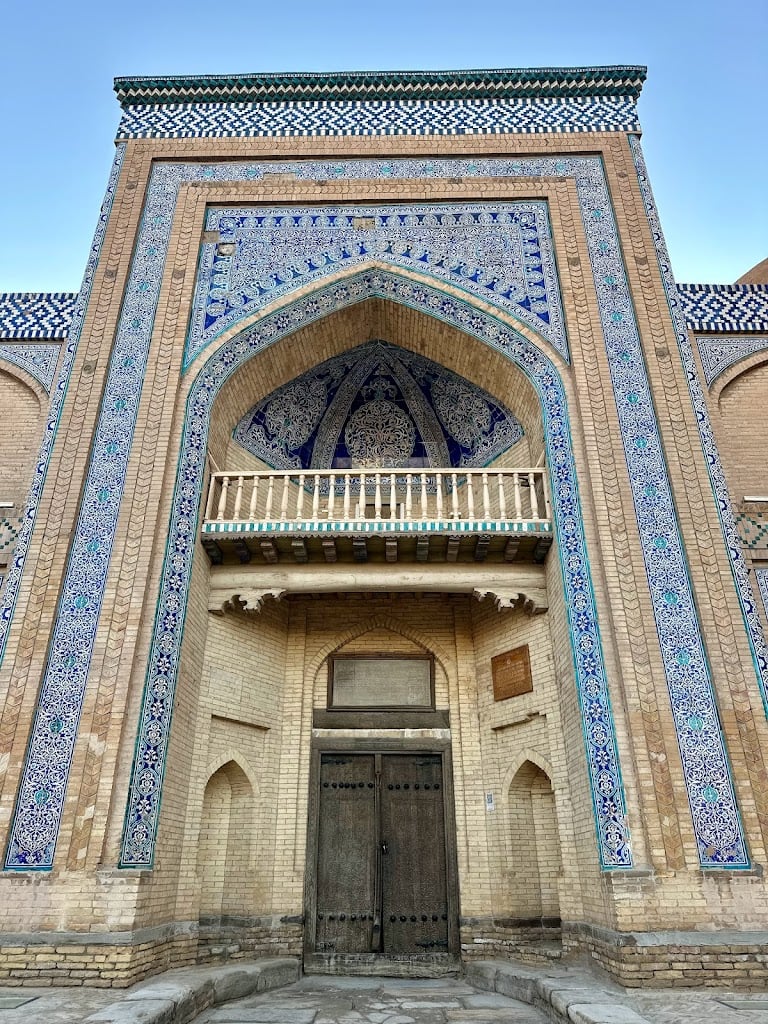Pahlavan Mahmoud Mausoleum





Ask ThatchGPT
Suggest a local expert to plan my trip
Suggest an unique itinerary for my Khiva trip
What foods do Khiva locals eat
What are some true hidden gems in Khiva
Help me brainstorm trip ideas for Khiva
Help me plan a family-friendly trip to Khiva
What people say
Pedro Pereira
Available for hire
"Pahlavan Mahmud was an Iranian poet and wrestler who lived from 1247-1326. Also known as Puria-ye-Wali, Mahmud was lionized as the paragon of Iranian chivalry (javanmardi) and esteemed for his literary and athletic accomplishments. Although he was not strictly a religious figure, his tomb became a popular place of pilgrimage in both Khoy (in Iran) and Khiva (in Uzbekistan), both of which claimed Mahmud as their own.
In 1810 the second ruler of the Qungrat dynasty, Mohammad Rahim I (r. 1806-1825), effectively adopted Mahmud as the khanate's patron saint and set about beautifying his tomb, which until then was a likely a modest affair. As the historian Dick Luijendijk notes, Mahmud was reappraised as "the city's patron saint, a champion wrestler and a pioneer of Sufism" (Luijendijk, see reference below). These qualities resonated well with the khanate's precarious position in a conflict-ridden region. In Mahmud, the Khan likely saw something of a kindred spirit; a mirror of his own self image. Mahmud represented physical strength, Islamic piety, and cultural sophistication, qualities that the young Khan likely wished to emulate. Despite this, there was never any attempt within Khiva to popularize the style of wrestling that was Mahmud's original claim to fame, nor were any zurkhaneh (Iranian-style wrestling facilities) established in the area.
The centerpiece of the Khan's building program was a spacious domed chamber crowned with a Timurid-style blue dome—the only one of its kind in Khiva—used as a Sufi lodge, or khanqah. Mahmud's cenotaph was placed within a brilliantly decorated side chamber to the west, fronted by a small ziyarat-khana (worship hall) leading from the khanqah. As for the Khan, he reserved a niche on the north wall of the domed khanqah for his own mausoleum, ensuring that visitors first set eyes upon his own tomb. Glazed tiles festooned with Mahmud's ruba'i (Persian poetry) are located throughout the complex.
Mohammad Rahim Khan's precedent of using the site as his own tomb was quickly adopted by later rules of the Qungrat dynasty who added several annexes for their own funerary chambers, transforming the site into a grand dynastic tomb and the centerpiece of royal prestige in the Ichan-Kala, or inner city. Along with the city's Ark, or fortress, and the Tash-Khovli palace of the Khan, the Pahlavan Mahmud mausoleum encapsulated in physical form the absolute authority of the Qungrat khans and their dominant (and uncontested) role in Khiva's identity
Over many decades, the area to the north, west, and east of Mahmud's tomb grew into a cemetery for the city's elite. Although most of these small tombs are of little architectural interest, they do suggest that proximity to Mahmud's tomb was desirable for those able to obtain plots in the dense heart of the Ichan-Kala."
Read more in:
Anna Kępa
"Additional ticket required at around 50k per person."
Read more in:
Mentioned in these guides
About Pahlavan Mahmoud Mausoleum
Get the inside scoop on Pahlavan Mahmoud Mausoleum from local experts, travel creators, and tastemakers. Browse genuine trip notes, Pahlavan Mahmoud Mausoleum reviews, photos, travel guides, and itineraries from real travelers and plan your trip with confidence.
Save this spot for later or start mapping out a new trip today
Try our AI Travel Assistant and get instant answers to any questions about your trip.
Ask ThatchGPT

